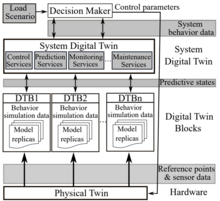A five-level single-phase inverter topology suitable for distributed power sources is experimentally verified and compared to a conventional inverter topology. The basic unit of the inverter comprises a voltage-level generator and a classical H-bridge inverter. The voltage-level generator generates positive voltage levels while the H-bridge is used to generate the zero and negative voltage levels. The utilization of the phase opposition disposition (POD) and the alternative phase opposition disposition (APOD) PWM techniques on the five-level single-phase inverter is also presented. Suitable inverter switching gate signals are derived to generate the desired five-level output waveforms. The five-level operation presented in this paper can be extended to an n-level inverter. The functionality of the proposed topology is verified via MATLAB/Simulink simulations and tested experimentally using DC power supplies as the DC voltage inputs. Finally, the circuit was also tested using photovoltaic (PV) modules as the DC voltage inputs. The proposed topology produced lower THD values as compared to the conventional topology discussed.
Publications
2023
A hierarchical digital twin of a Naval DC power system has been developed and experimentally verified. Similar to other state-of-the-art digital twins, this technology creates a digital replica of the physical system executed in real-time or faster, which can modify hardware controls. However, its advantage stems from distributing computational efforts by utilizing a hierarchical structure composed of lower-level digital twin blocks and a higher-level system digital twin. Each digital twin block is associated with a physical subsystem of the hardware and communicates with a singular system digital twin, which creates a system-level response. By extracting information from each level of the hierarchy, power system controls of the hardware were reconfigured autonomously. This hierarchical digital twin development offers several advantages over other digital twins, particularly in the field of naval power systems. The hierarchical structure allows for greater computational efficiency and scalability while the ability to autonomously reconfigure hardware controls offers increased flexibility and responsiveness. The hierarchical decomposition and models utilized were well aligned with the physical twin, as indicated by the maximum deviations between the developed digital twin hierarchy and the hardware.
Posture-based plant pre-alignment is the preparation and configuration of naval power systems to tailor its performance based on multiple projections of anticipated system loading. Pre-alignment differs from alignment because it prepares power and energy systems for success in the near future, rather than just optimizing for current conditions. This method leverages the operator's intuition or foreknowledge of upcoming mission segments to enable more effective operation of a ship electrical power plant and should improve responsiveness to challenging loads, including pulsed mission systems, when the method is applied in a Navy Power and Energy System (NPES) tactical energy management controller. As with conditions of readiness for crew members, the NPES posture and alignment can proactively change to establish readiness for potential power demands based on the requirements of the mission for the current mode of operation. Preliminary experimental results of posture-based alignment, as integrated with digital twin technology, are provided and discussed. Future impact of posture-based pre-alignment on Naval applications include reduced load shedding and integration of power and energy systems to include propulsive loads and mission critical loads.



